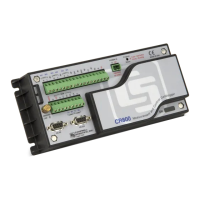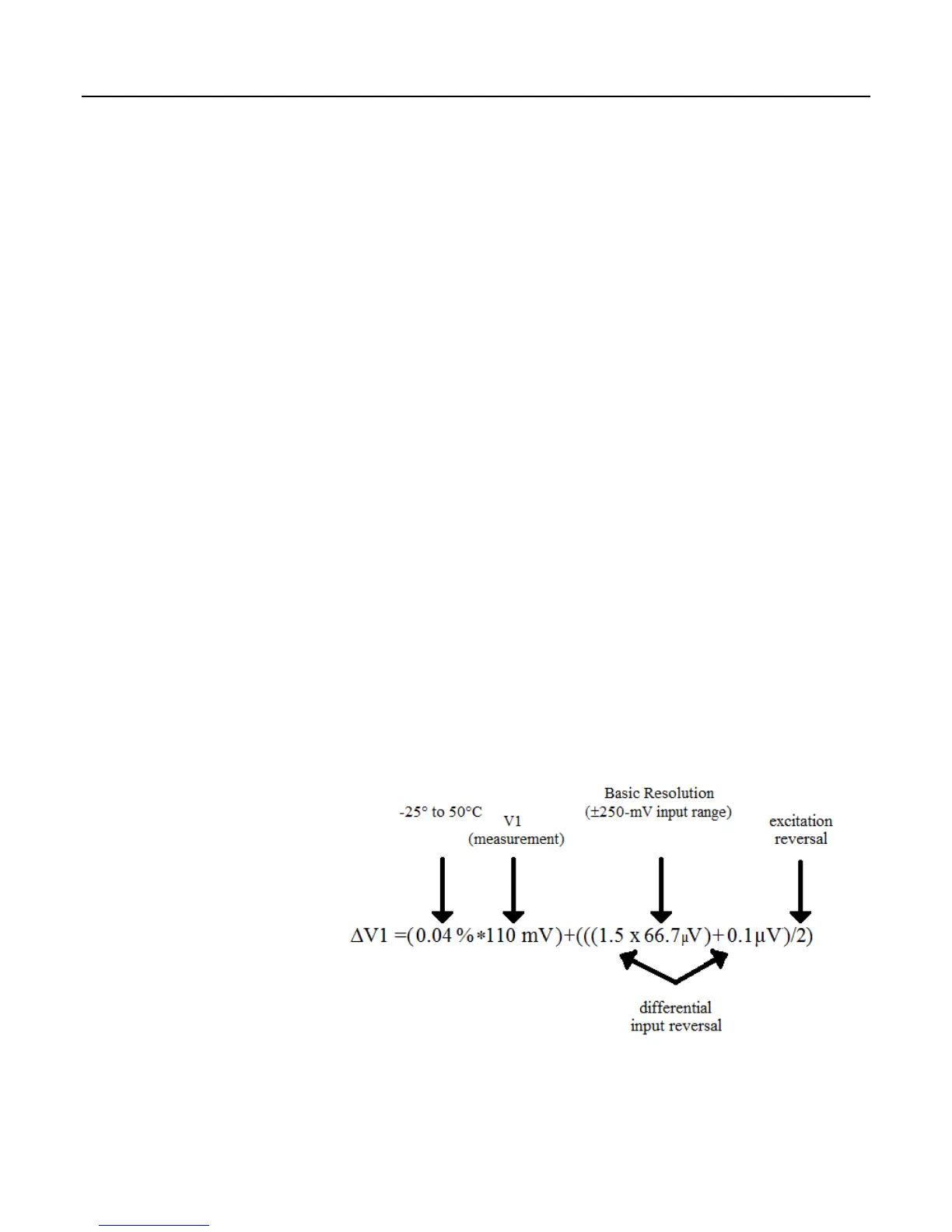Section 8. Operation
295
• Effects due to the following are not included in the specification:
o Bridge-resistor errors
o Sensor noise
o Measurement noise
The ratiometric-accuracy specification is applied to a three-wire half-bridge
measurement that uses the BrHalf() instruction as follows:
TherelationshipdefiningtheBrHalf()instructionisX=V1/Vx,whereV1
isthevoltagemeasurementandVxistheexcitationvoltage.The
estimatedaccuracyofXisdesignatedas∆X,where∆X=∆V1/Vx.∆V1is
derivedusingthefollowingme
thod.
The ratiometric-accuracy specification is applied to a four-wire full-bridge
measurement that uses the BrFull() instruction as follows:
TherelationshipdefiningtheBrFull()instructionisX=1000*V1/Vx,
whereV1isthevoltagemeasurementandVxistheexcitationvoltage.
ResultXisexpressedasmV/V.EstimatedaccuracyofXis∆X,where∆X
=1000*∆V1/Vx.∆V1isderivedusingthefollowingmethod.
∆V1isderivedusingth
eratiometric‐accuracyequation.Thederivation
isillustratedinthisexample,whichissupportedbytheassumptionthat
themeasurementisdifferentialwithinputreversal,datalogger
temperatureisbetween‐25°to50°C,analog‐inputrangeis±250mV,V1
=110mV,andexcitationisre
versedduringtheexcitationphaseofthe
measurement.Theeffecteachassumptionhasonthemagnitudeof
∆V1inthisexampleisnotedinthefollowingfigure.
Figure 91: Deriving ∆V1

